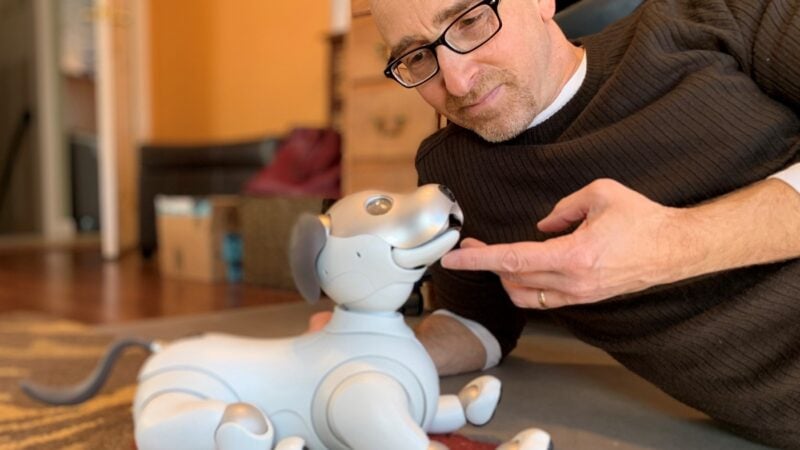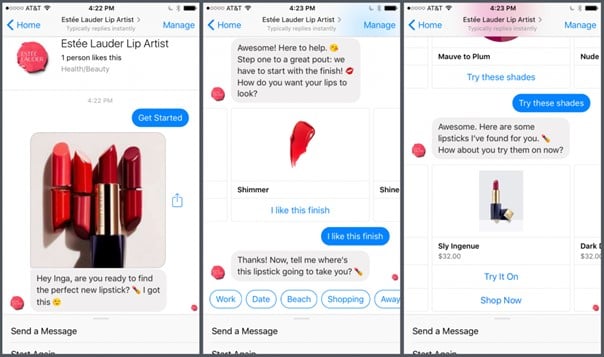
3 Trends in Domestic Appliances & Household Care
Written by Anita Janssen
Take a closer look at 3 trends in domestic appliances & Household care from our What Matters 2023 Report. Read more here.
While once the idea of speaking and interacting with technology did not only seem impossible, but felt unnecessary and even odd, smart technology today has transformed many parts of our lives. Just think of how Alexa, Amazon’s cloud-based voice service, gives you advice on cooking times or the duration of your commute. We might not all use a digital assistant for our daily chores, but AI definitely had an impact on our lives and businesses, with machine learning having been adopted across all industries, from product development to customer services. This is also the case in fashion, where AI has found its way into different parts of the value chain. If you thought the creative skill of designing clothes, offering style advice and operating as fashion police is per definition human, you are wrong. Welcome to a world where robots and AI are the new fashionistas that are (literally) styling our lives.
Machine-learning systems can provide an edge when it comes to spotting and reacting to the latest fashion trends. Amazon developed an algorithm that uses images (e.g., Instagram, Pinterest…) to learn about a particular style and generate new items in similar styles, from scratch. This smart technology, resulting in an AI fashion designer, will allow brands to reduce the time to market and be on par with the latest trends.
Adidas is working on making 3D-printed shoes and consumer products, where shoes match a person’s personal footprint, taking into account the pressure points and contour details, providing a customized shoe with maximum comfort.
But even products are getting smarter; Levi’s® launched Levi’s Commuter™ Trucker jacket, a $350 denim jacket with 15 threads on the sleeve and a Bluetooth connection, allowing you to trigger actions (e.g., receive commuter directions, play music, answer calls…) from a paired smartphone.

But it goes beyond the production process. Many brands (e.g., Tommy Hilfiger) have introduced AI-powered chatbots to interact with customers on channels like Facebook to serve customers’ needs anywhere and anytime. Key here is to add value, as customers don’t want to connect with bots just because they are in need of a chat. IT is rather about introducing small hacks that make consumers’ lives easier (read more on the next generations’ hackaton lifestyle in our frAGILE bookzine). Estée Lauder understood that the critical problem with e-fashion and e-beauty is the fact that customers cannot try or test the product. By integrating augmented reality into their Lip Artist chatbot, they solved this friction, with the bot assisting the users to find the right product and shade based on a photo, mirroring the in-store experience.
ASOS incorporated a similar application in their app, although it goes even further. Through visual search technology, app users can upload a picture of the product they are searching for, which is then analyzed to find cross-references in the ASOS inventory. This closely taps into the growing needs of people spotting clothes and fashion items on TV or when worn by celebrities, and wanting to shop for a similar style. By identifying the shape, color and pattern, ASOS’ AI technology pushes the most relevant results from its collection.
Another example is UK-based fashion retailer Thread, whose core premise is to pair customers tailored recommendations on a weekly basis, based on the customers’ stylistic preferences. Customers can upload pictures of their favorite styles and clothes, which Thread’s AI system – also known as Thimble – uses to spot patterns to find the right item, in the right size.
But the assistance also comes with a ‘phygital’ layer. Amazon launched its Echo Look, the first AI style assistant in the comfort of your own bedroom. The technology allows to capture your outfit (picture and video) through voice command, allowing your inner fashionista to emerge and keep a diary of your favorite looks. Not sure what to wear? Echo Look also provides style advice (no more need to check with your partner); simply upload two pictures and it will give recommendations based on current trends and what flatters you.
AI can also assist in-store; an example is Macy’s in-store shopping assistant. The mobile webtool provides shoppers with real-time information as they move around the store. Customers can ask questions ranging from where specific products are located to which services are available in a particular store.
At a Store of the Future event, luxury e-commerce platform Farfetch demonstrated the use of connected clothing racks and smart mirrors. The connected clothing rack records which items customers pick up and stores them in an app, thus allowing customers to keep track of what they like when shopping, while the smart mirror allows shoppers to request a different size, look for items to finish their look, and even pay without leaving the dressing room.
It is clear that esthetics and tech are blending, and that AI is transforming the fashion industry as we speak. Tech and fashion go hand in hand, which is also something InSites Consulting found in a study together with Condé Nast, which revealed that people with an interest in fashion are also more likely to adopt new technologies, bringing many opportunities for tech-fashion.
Want to explore how your brand can connect with the next generations, and Gen Z in particular? Discover what our research toolbox and expert power can do for your brand!

Written by Anita Janssen
Take a closer look at 3 trends in domestic appliances & Household care from our What Matters 2023 Report. Read more here.

Written by Delphine Vantomme
Take a deeper dive into what trends are coming up in Beauty. A closer look at the industry from our What Matters Trend Report.

Written by Scott Lee
From our 2023 What Matters Trend Report, find a closer look at 4 trends in Finance and what you can expect to see in this industry.